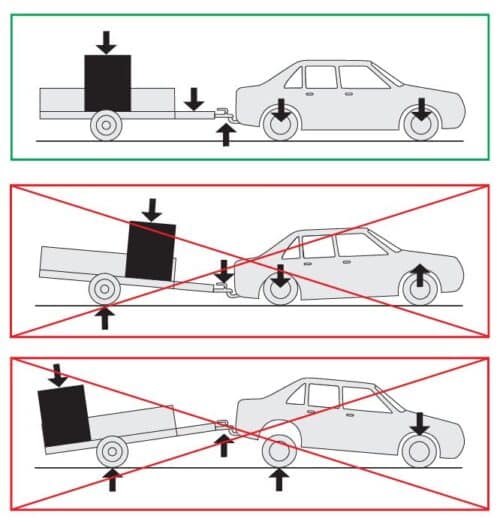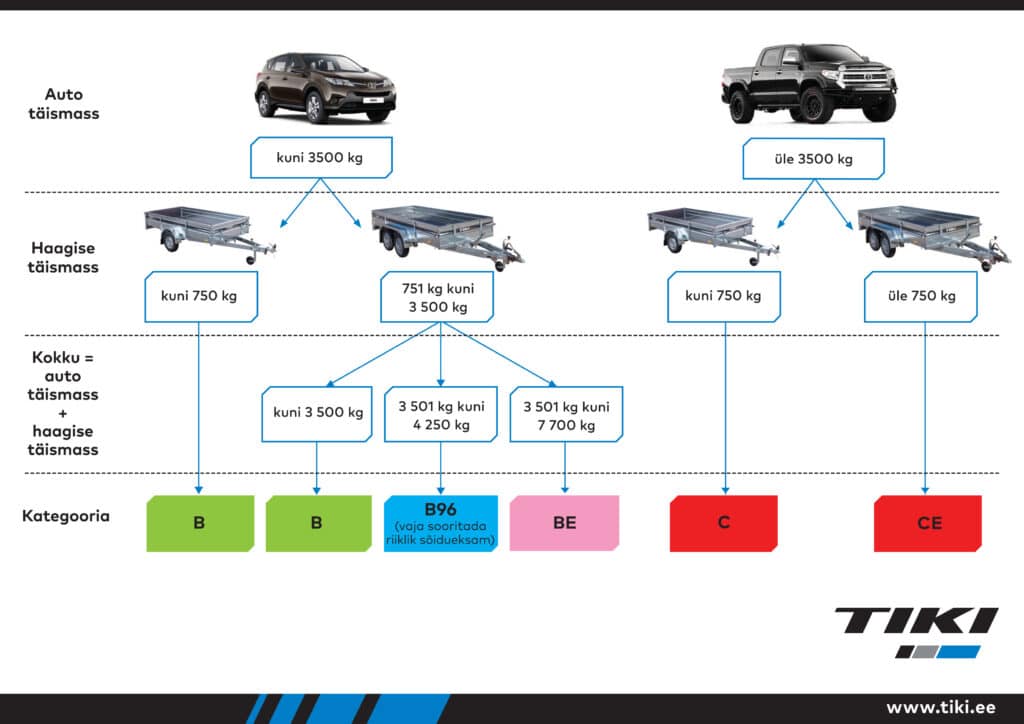- Main Page
- >
- Maintenance
Useful information for trailer users
your trailer so that it lasts for years? What are the warranty terms for Tiki trailers? Get the necessary information and drive safely! Read more
Using a trailer
In order for your trailer to have a long service life and safe use, be sure to familiarize yourself with the entire contents of the Tiki trailer user manual before using the trailer for the first time.
Pay special attention to the parts of the text marked with an exclamation mark, because they are important above all for your safety. Keep the manual as a reminder throughout the life of the trailer. If you have any questions that are not answered in this guide, be sure to contact our sales office or your trailer dealer.
TIKI trailer user manual and service book
Tiki cable trailer user manual
Jaxal plastic cover installation instructions
Tiki trailer cover installation instructions
TR7 winch general security and mounting instructions
Loading the trailer
Before loading the cargo on the trailer, be sure to find out the weight of the load to avoid overloading.
High-density materials such as bricks, sand, etc. are extremely heavy, even with a small volume, and it
is easy to overload the trailer with them. An overloaded trailer can become uncontrollable.
Please note! If the trailer is fitted with accessories (e.g. plastic cover, extra side panels, spare wheel, etc.), their weight must also be added to the weight of the load.
The weight of the load must not exceed the load capacity of the trailer!
Here’s how to find the load capacity of a trailer:
Load capacity = Laden mass – Unladen mass
Also, before you start driving with a load, make sure that you do not exceed the maximum actual mass of
the towable trailer permitted by the manufacturer of the towing vehicle. This is indicated in the registration certificate of the vehicle.
Loading and positioning the cargo
Only load the load on the trailer that is connected to the coupling. The parking brake of the towing vehicle must be applied!
Position the center of gravity of the load above or as close to the trailer axle as possible. In the case of a trailer with several axles, place the center of gravity of the load between the front and rear axle, in the center.

The load loaded on the trailer must be secured to prevent it from moving during transport.
When transporting objects, fix them to the lashing eyes of the trailer with load straps. Use load
straps of the appropriate strength for the weight of the load. The strength of the load strap is indicated
on the data plate of the strap. Only use straps with a legible data and without damage or knots.
For loose bulk materials (sand, gravel, etc.) that cannot be secured with straps, it is recommended
to cover them with a load cover and select a lower travel speed to prevent dangerous situations.
Before driving
Before you travel first time with the trailer tighten the wheel bolts to 95 Nm. Tighten again after the first journey.
Before driving, always check the following:
- the coupling head must be properly locked on the ball mount and the safety cable or emergency brake cable (trailer with brakes) must be connected;
- all the lights on the trailer are working properly;
- the tyre pressures of the trailer are uniform and range from 80 to 100% of the maximum pressure marked on the tyre;
- the residual tread depth of the tyre is correct;
- the load is securely fastened;
- hatches, extra side panels and other accessories are attached;
- the support wheel is raised to the upper position and locked in the travel direction;
- the handbrake is released (trailers with brakes).
Trailer registration and driving rights
A trailer is a means of transport and must be registered with the Transport Administration just like a car. The EC certificate of conformity of the trailer and the purchase document are required for registration.
Important definitions
Total weight – Hengerens største tillatte vekt inklusive tilleggsutstyr og last. Angitt i vognkortet.
Egenvekt – Vekten på hengeren uten last. Angitt i vognkortet.
Kuletrykk – Tilhengeren og lastens vekt på kjøretøyets hengerfeste.
Aktuell vekt – hengerens vekt på et konkret tidspunkt inklusive tilleggsutstyr og last.
Tilhengerens kjøretøygruppe – tilhengerens kjøretøygruppe fastsettes på grunnlag av vekten som
hviler på veibanen gjennom dekkene. Ved fastsettelse av kjøretøygruppe tas det ikke hensyn til
kuletrykk. Klassifiseringen er angitt i vognkortet.
Kategori O1 – vekt fra hjulene mot veibanen maks 750 kg.
Kategori O2 – vekt fra hjulene mot veibanen maks 3500 kg.
What kind of driver’s licenses are required?
Before driving with a trailer, make sure the you, as the driver, have the driving license category required to drive a specific combination of vehicles!
You have a category B category driving license?
With a category B driving license, it is allowed to drive a light trailer (up to 750 kg). When using a light trailer, there is no need to monitor kilograms in the matter of the right to drive.
Example: you have a van with a gross weight of 3500 kg and a light trailer of 750 kg. Although the gross weights are a total of 4250 kg, you can drive this road train with a category B driver’s license.
You want to tow a trailer with a gross weight of 751 kg and more?
Now it is necessary to start calculating the kilograms of the car and the trailer. With category B, you can drive with a road train of up to 3500 kg.
Example: you have a vehicle with a gross weight of 1897 kg. This means that you can tow a trailer up to 1603 kg. This is, of course, if it is allowed for the vehicle.
B96 – note on the driving license
If you want to tow a larger trailer (gross weight over 3500kg, but under 4250kg), but you don’t want to learn the BE category yet, there is also an intermediate option. B96, i.e. category B driver’s license with note 96. With this type of license, you can drive a road train with a trailer, which is not a light trailer, and the total weight of the vehicle and the trailer is up to 4250 kg. In order to obtain the B96 category, a driving test must be taken at the Transport Administration.
BE category driving license
However, if you need to tow an even bigger trailer, you must already have BE category driving license to drive. To do this, you have to learn the BE category at a driving school and pass both the theory and driving tests at the Transport Administration.
With a BE category driving license, you can drive a B category car (gross weight up to 3500 kg) and a trailer with gross weight up to 3500 kg, if the car is allowed to carry such a trailer.

Lufttrykk
Feil trykk i dekkene på din henger fører til at dekkene slites ut før tiden, øker drivstoff orbruket, gjør kjøringen mer usikker og kan gi lengre bremselengder. Kontroller derfor regelmessig dekktrykket og tilpass
det etter lasten du planlegger å transportere. Kontroller alltid lufttrykket når dekkene er kalde. Det anbefalte luftrykket varierer mellom ulike dekkstørrelser. For å vite hvilket lufttrykk som gjelder for
akkurat din henger kan du undersøke hva som står på dekket. På utsiden av dekket finnes det en hel del infromasjon, slik som dimensjon, hvor mye vekt dekket klarer og anbefalt lufttrykk.
Vinterdekk
Om bilen har piggdekk, må også hengeren ha det. Har bilen piggfrie vinterdekk kan hengeren enten ha piggdekk eller piggfrie vinterdekk.
Vinterdekk kan være enten piggdekk eller såkalt piggfrie friksjonsdekk. Dekkene skal være særlig egnet for vinterkjøring og merket med M+S, M-S, M.S., M&S, MS eller Mud and Snow.
Mer informasion om vinterdekk finnes på Statens vegvesen webside

